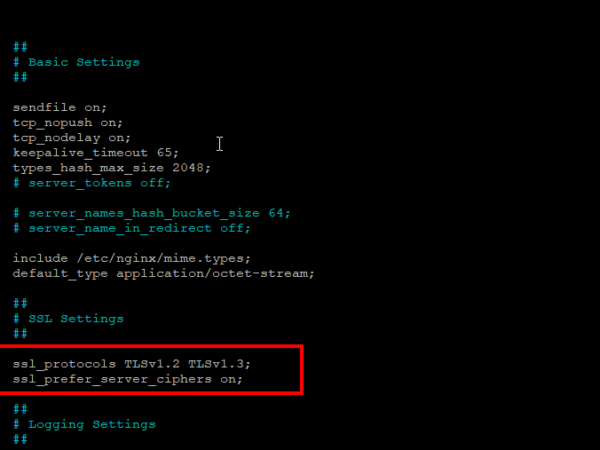Laravel is a popular PHP web application framework used to develop robust and dynamic web applications. When it comes to deploying a Laravel application, Nginx is a popular web server choice due to its speed, stability, and scalability. Configuring Nginx for Laravel is important for production deployments.
In this tutorial, we will provide a comprehensive guide on how to configure Nginx for a Laravel application.
Step 1: Install Nginx
Before you can configure Nginx for your Laravel application, you must first install Nginx on your server. You can install Nginx on your server using the following command:
sudo apt-get updatesudo apt-get install nginx
Step 2: Install PHP
To run a Laravel application on Nginx, you also need to install PHP, which is the scripting language that Laravel is built with. You can install PHP and its dependencies by running the following command:
sudo apt-get install php php-fpm php-mysql
This command installs PHP, the PHP FastCGI Process Manager, and the MySQL extension for PHP.
Once the installation is complete, you need to configure PHP to work with Nginx. You can do this by editing the php-fpm configuration file:
sudo nano /etc/php/8.1/fpm/pool.d/www.conf
In this file, you need to update the following settings:
|
user = www–data group = www–data listen = /run/php/php8.1–fpm.sock |
These settings ensure that PHP runs as the same user and group as Nginx and listens on the correct socket.
Save and close the file when you are done, and then restart PHP-FPM to apply the changes:
sudo systemctl restart php8.1-fpm
With PHP installed and configured, your Nginx server is now ready to serve Laravel applications.
Step 3: Create an Nginx Server Block
The next step is to create an Nginx server block, which is used to define the configuration settings for a specific website or application. To create a server block for your Laravel application, create a new file in the /etc/nginx/sites-available directory, as follows:
sudo nano /etc/nginx/sites-available/laravel
In this file, add the following configuration settings:
|
1 2 3 4 5 6 7 8 9 10 11 12 13 14 15 16 17 18 19 |
server { listen 80; server_name example.com; root /var/www/laravel/public; index index.php; location / { try_files $uri $uri/ /index.php?$query_string; } location ~ .php$ { try_files $uri =404; fastcgi_pass unix:/run/php/php8.1–fpm.sock; fastcgi_index index.php; fastcgi_param SCRIPT_FILENAME $document_root$fastcgi_script_name; include fastcgi_params; } } |
In this configuration, we are listening on port 80, defining the server name as example.com, and setting the root directory for the Laravel application. We are also specifying the index file and defining the location block for the Laravel application. In addition, we are defining the location block for PHP files and specifying the FastCGI parameters.
Step 4: Enable the Nginx Server Block
Once you have created the server block, you must enable it. To do so, create a symbolic link from the /etc/nginx/sites-available/laravel file to the /etc/nginx/sites-enabled directory, as follows:
sudo ln -s /etc/nginx/sites-available/laravel /etc/nginx/sites-enabled/
Before restarting Nginx, you should test the configuration to ensure that there are no syntax errors. You can test the configuration using the following command:
sudo nginx -t
If there are no syntax errors, you can restart Nginx using the following command:
sudo systemctl restart nginx
Step 5: Configure SSL/TLS
To secure your Laravel application, you should configure SSL/TLS. To do so, you will need to obtain an SSL/TLS certificate from a trusted certificate authority (CA) and install it on your server. Once you have obtained a certificate, you can configure SSL/TLS by adding the following configuration settings to the server block:
|
listen 443 ssl; ssl_certificate /path/to/your/certificate.pem; ssl_certificate_key /path/to/your/private.key; |
You should replace the /path/to/your/certificate.pem and /path/to/your/private.key with the paths to your SSL/TLS certificate and private key, respectively.
Step 6: Optimize Performance
To optimize the performance of your Laravel application, you can configure Nginx caching. Caching can help reduce server load and improve page load times. To enable caching, you can add the following configuration settings to the server block:
Enabling Caching
Caching can help improve the performance of your Laravel application by reducing server load and improving page load times. To enable caching in Nginx, you can add the following configuration to the server block:
|
location ~* .(jpg|jpeg|png|gif|ico|css|js)$ { expires 1y; add_header Cache–Control “public, no-transform”; } |
This configuration tells Nginx to cache image, CSS, and JavaScript files for one year and to send a “public” Cache-Control header.
Enabling Gzip Compression
Enabling gzip compression can also help improve the performance of your Laravel application by reducing the size of files that are transferred between the server and the client. To enable gzip compression in Nginx, you can add the following configuration to the server block:
|
gzip on; gzip_types text/plain text/css application/json application/javascript text/xml application/xml application/xml rss text/javascript; |
This configuration tells Nginx to enable gzip compression for text-based file types.
Adjusting Worker Processes and Connections
Finally, you can adjust the worker processes and connections to optimize the performance of your Laravel application on Nginx. This can help ensure that your server can handle a large number of requests without becoming overwhelmed. To adjust the worker processes and connections, you can add the following configuration to the http block in the nginx.conf file:
|
worker_processes auto; worker_connections 1024; |
This configuration tells Nginx to automatically detect the number of CPU cores on the server and to use that number for the worker processes. It also specifies a maximum of 1024 connections per worker process.
Conclusion
In this tutorial, we have provided a comprehensive guide on how to configure Nginx for a Laravel application. We have covered the steps to install and configure Nginx, create an Nginx server block for Laravel, enable SSL/TLS, and optimize performance. By following these steps, you can ensure that your Laravel application runs smoothly and efficiently on Nginx.



